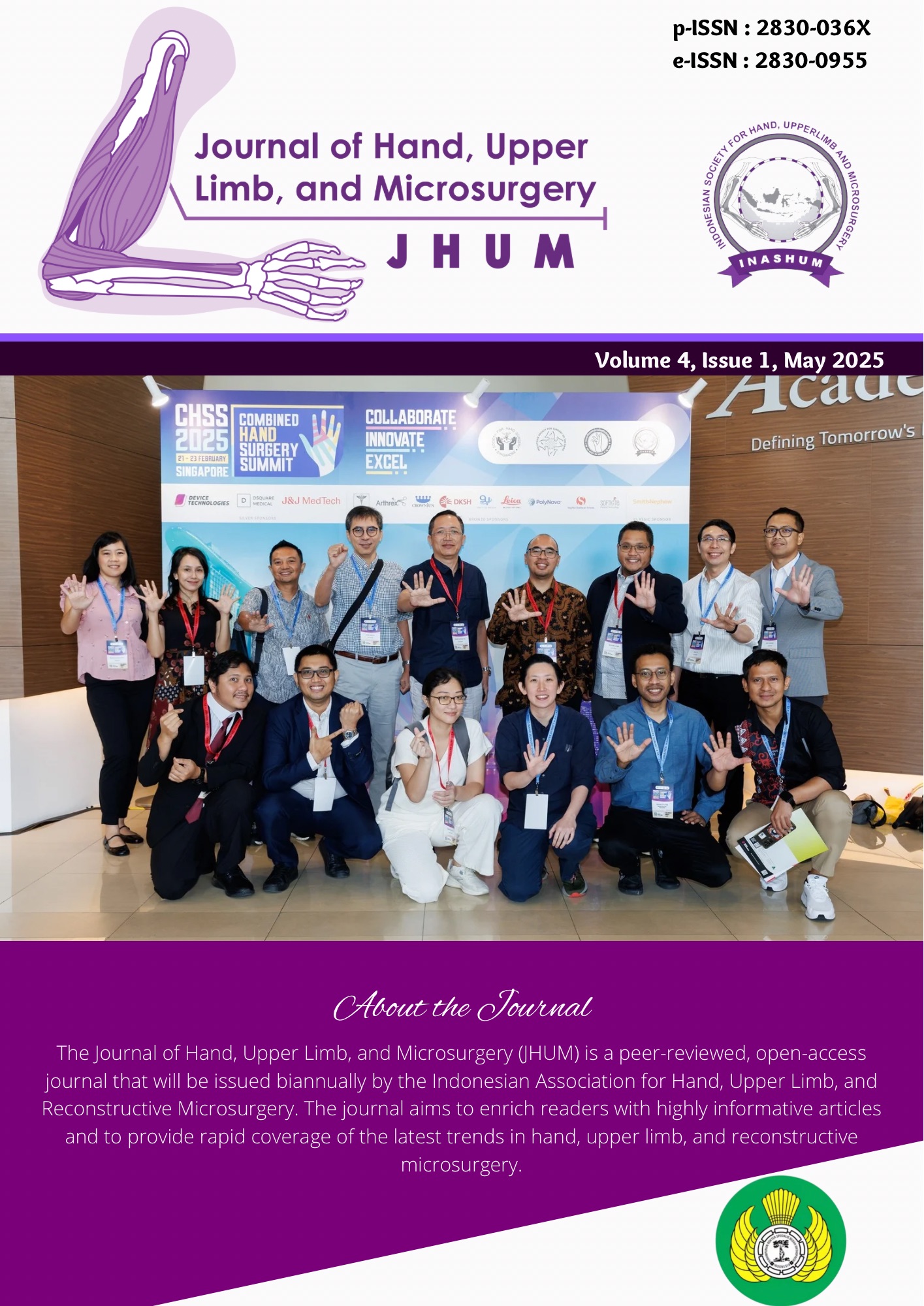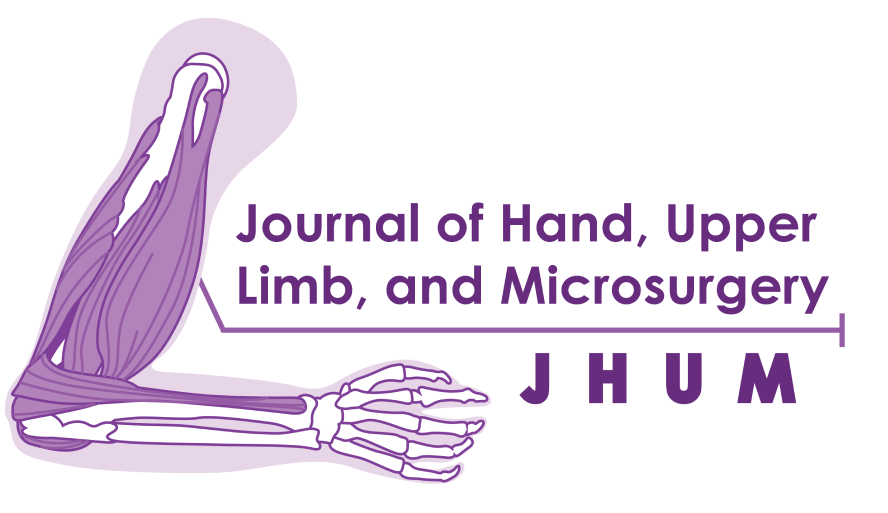OPEN REDUCTION AND FIXATION WITH CORACOID OSTEOTOMY FOR A COMPLICATED PROXIMAL HUMERUS FRACTURE-DISLOCATION: A CASE REPORT
Keywords:
proximal humerus fracture, proximal humerus dislocation, coracoid osteotomyAbstract
Introduction: Proximal humerus fracture dislocation presents a debilitating problem with poor outcome due to the high risk of avascular necrosis and the necessity for further arthroplasty in the future. Many studies report various surgical techniques from minimally invasive to classic open procedures for the management of proximal humerus fracture dislocation.
Objective: The aim of study is to discuss the surgical management of complicated proximal humerus fracture dislocation.
Case Presentation: We present a 44-year-old female with severe Neer 4 parts proximal humerus fracture and anterior humeral head dislocation following a high-energy motor vehicle injury. Open reduction and plate screw fixation is performed successfully with aid from coracoid osteotomy. Humeral head dislocation is firstly reduced into the glenoid. Coracoid osteotomy provides better visualization and a larger surgical field. Postoperative follow-up shows a satisfactory functional arm without any signs of early avascular necrosis.
Discussion: Despite the initial intention to perform a shoulder arthroplasty, intraoperative evaluation allows a better perspective and encourages head-preserving reconstruction with a more convenient plate and screw fixation. Coracoid osteotomy is a pivotal procedure in this surgery. It exposes many important structures in the anterior deltopectoral approach.
Conclusion: Open surgery with a properly undertaken coracoid osteotomy approach presents beneficial support for managing such a complicated case of proximal humerus fracture-dislocation.

